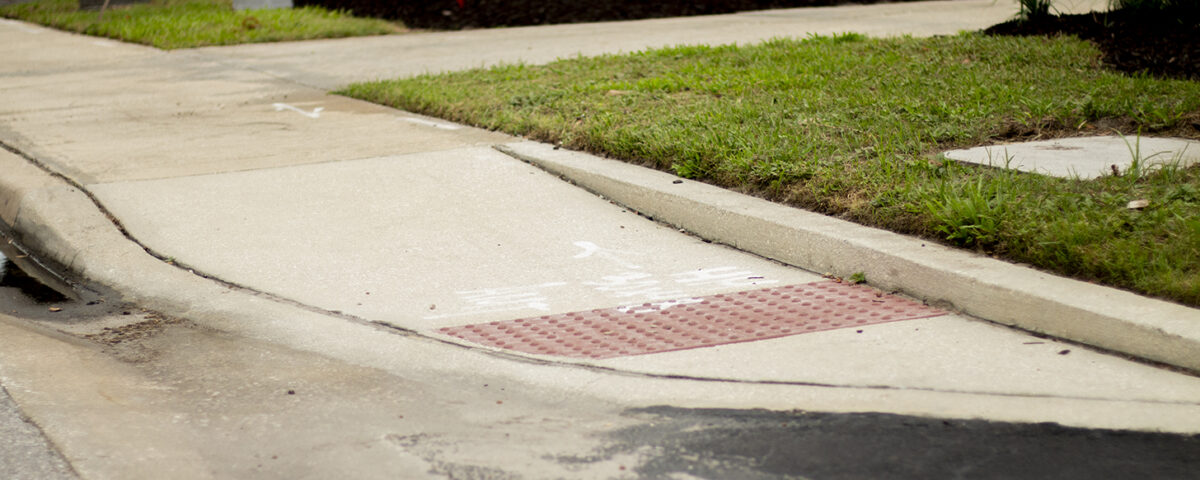
Rearranging Furniture for ADA Compliance
September 5, 2023
Removing Turnstiles and Providing Accessible Paths Under the ADA
September 18, 2023Ensuring equal access to public spaces is a fundamental principle of the Americans with Disabilities Act (ADA). One crucial element of this landmark legislation is the construction of curb cuts in sidewalks and entrances. These curb cuts, also known as curb ramps, play a pivotal role in facilitating mobility for individuals with disabilities, particularly those who use wheelchairs or other mobility devices. In this article, we will delve into the significance of curb cuts and their importance in upholding the ADA’s commitment to inclusivity.
At a Glance
- Accessibility: Curb cuts are instrumental in providing accessible pathways for people with disabilities. They allow for smooth transitions between sidewalks and roads, ensuring everyone can navigate public spaces with ease.
- Independence: Curb cuts empower individuals with disabilities to move independently without assistance, fostering a sense of self-reliance and dignity.
- Safety: These ramps enhance safety by reducing the risk of accidents. Not only do they benefit people with disabilities, but they also aid parents with strollers, delivery workers, and anyone pulling a suitcase.
- Legal Requirement: Curb cuts are mandated by the ADA, making their implementation a legal obligation for businesses, municipalities, and public spaces.
- Universal Design: Incorporating curb cuts into urban planning promotes universal design principles, making public areas accessible to everyone, regardless of their physical abilities.
Why Curb Cuts Matter:
Curb cuts are not just a matter of convenience; they are a matter of civil rights. They break down barriers that have historically limited the mobility and participation of people with disabilities. By providing accessible routes, they enable individuals to access public spaces, educational institutions, and employment opportunities, fostering inclusivity and equal opportunities.
Imagine navigating a city or a neighborhood without curb cuts. For someone using a wheelchair, it would be akin to encountering a series of insurmountable hurdles at every street corner. Curb cuts eliminate these barriers, granting individuals the freedom to explore their communities safely and with dignity.
The Legal Mandate:
The ADA, signed into law in 1990, mandates the construction of curb cuts as a vital component of accessible infrastructure. This legislation applies to all public entities and businesses, regardless of size, under Title II and Title III. Failure to comply with these regulations can result in legal consequences, emphasizing the seriousness of this accessibility requirement.
Universal Design and Inclusivity:
Curb cuts extend their benefits beyond just individuals with disabilities. They exemplify universal design principles, which aim to create environments accessible to everyone, regardless of their physical abilities. Parents pushing strollers, delivery workers maneuvering carts, and seniors with mobility challenges all benefit from curb cuts. In essence, these ramps make our communities more inclusive and accommodating to the diverse needs of their residents.
In conclusion, curb cuts are not just practical amenities; they are emblematic of a society’s commitment to inclusivity and equality. They provide accessible pathways, foster independence, enhance safety, and uphold the legal obligations of the ADA. As we continue to build and improve our communities, the presence of curb cuts serves as a tangible reminder that everyone, regardless of their physical abilities, deserves the opportunity to navigate the world with dignity and ease.




